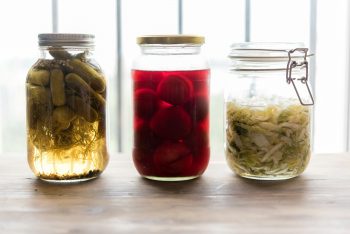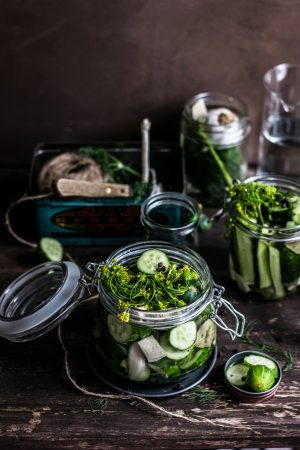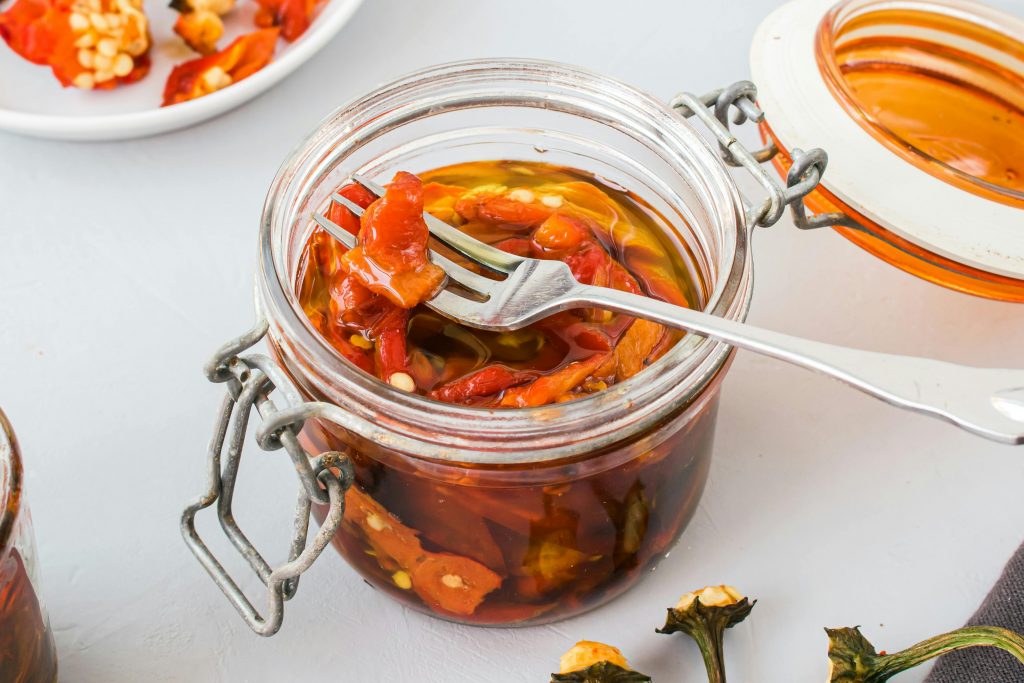Food preservation methods like pickling and fermenting have been used for hundreds of years to extend the shelf life of foods. While both processes involve preserving foods, pickling and fermenting are not the same, and both processes yield different results.
Let’s look at the differences between pickling and fermenting foods:
What is fermenting?
Fermentation is a natural metabolic process that occurs when microorganisms, such as bacteria, yeast, or fungi, break down carbohydrates in the absence of oxygen, resulting in the production of alcohol, acids, or gases. Fermented foods transform in texture, flavour, and nutritional composition often becoming tangy, sour, or effervescent. Common fermented foods include sauerkraut, kimchi, yoghurt, and kombucha.
Fermentation begins by introducing beneficial microorganisms, such as lactobacillus bacteria or yeast, to the food substrate. The food is then submerged in an oxygen-deprived environment – typically in a brine solution – packed tightly and sealed in an airtight container as ‘lacto fermentation’ begins to take place.
Over time, the microorganisms ‘eat’ (metabolise) sugars present in the food, producing lactic acid, alcohol, or other byproducts that preserve and flavour the food. Ferments are left to mature for a period ranging from a few days to several months, which allows flavours to develop and acidity to increase.
The benefits of eating fermented foods are fantastic. They are rich in probiotics which promote gut health and digestion, and fermentation can enhance the bioavailability of nutrients in foods, making them easier to digest and absorb. Fermented foods also rely only on natural microbial activity for preservation, which eliminates the need for artificial additives or preservatives.

What is pickling?
Pickling is also a preservation method, and it involves submerging foods in an acidic solution, typically vinegar, to prevent spoilage and boost flavour. In contrast to fermented foods, the acidic environment created by the vinegar in the picking process stops the growth of bacteria, molds, and yeast, which helps preserve the food for an extended period. Common pickled foods include cucumbers (pickles), onions, carrots, and peppers.
In the picking process, food is cleaned and often sliced or chopped and then submerged in a brine solution consisting of vinegar, water, salt, and sometimes sugar. The acidity of the vinegar serves as a preservative, while salt helps draw out moisture from the food, further aiding in preservation. Other flavourings such as herbs, spices, garlic, or mustard seeds may then be added for taste. Once the food is adequately pickled and flavoured, it is stored in sterilised jars or containers and sealed tightly to keep freshness.
Pickling extends the shelf life of foods and the acidic solution infuses the food with tangy and savoury flavours that many of us have come to love as an add-on for foods like burgers to salads and more.

Unsplash
What’s the difference between fermenting and pickling?
The biggest difference between pickling and fermenting is microbial growth. While pickling relies on acidity to stop microbial growth, fermentation harnesses microbial activity to transform and preserve foods.
As far as flavour goes, pickled foods tend to have a tangy, vinegary flavour, whereas fermented foods exhibit complex, sour, or effervescent flavours. Fresh pickled foods can last upwards of 75 days when unopened and stored in the fridge, whereas fermented foods may last up to a year in the fridge.
When it comes to the healthier option between fermenting and pickling, fermented foods offer more benefits with bioavailable nutrients and probiotics for gut health. Pickles may offer health benefits via beneficial nutrients, however, pickles do not contain gut-friendly bacteria and are often made with added sugar.
ALSO SEE: 4 Quick and easy pickle recipes
Article originally written by Savanah Douglas for Woman&Home.
Feature image: Pexels

